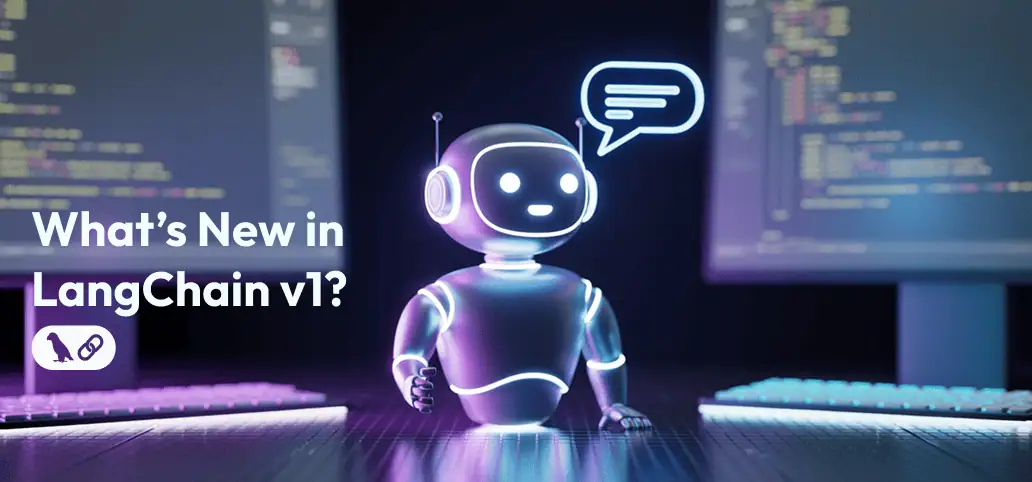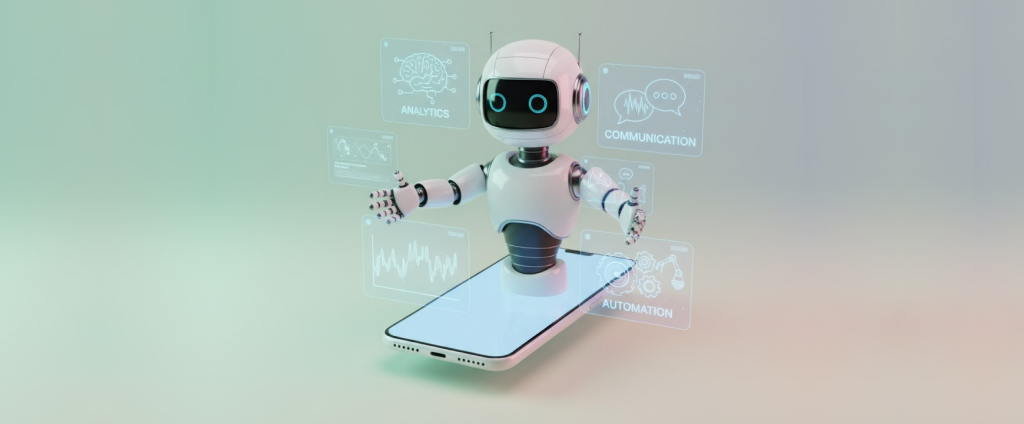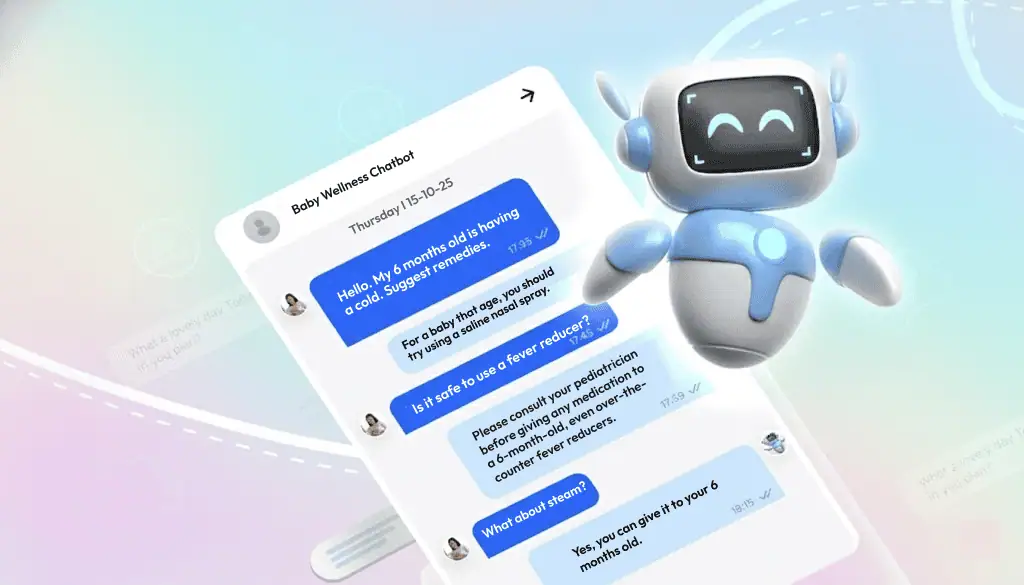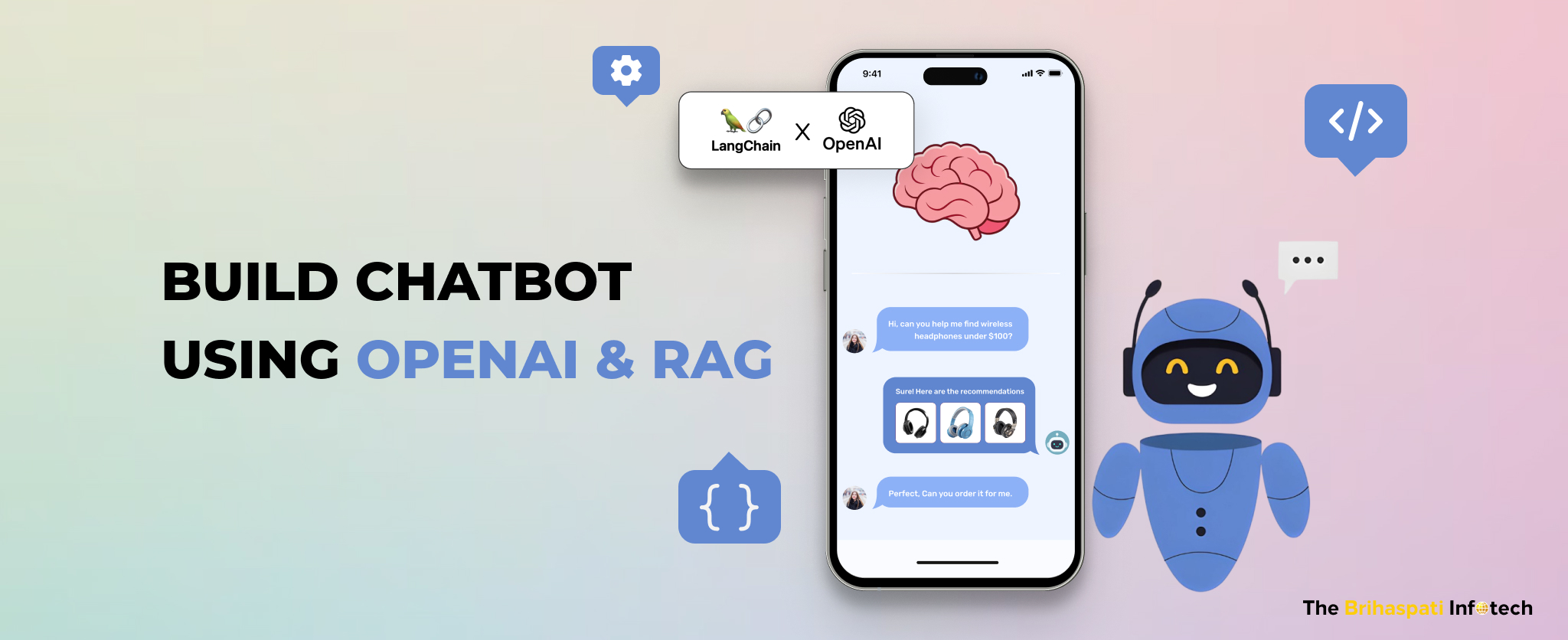
Build a Chatbot Using OpenAI & RAG (2025 Guide)
Want to build a chatbot using OpenAI? You’re at the right place.
As of 2025, over 1.4 million businesses worldwide use chatbots to support, sell, and scale faster. From lead generation to 24/7 customer support, conversational AI chatbots reduce human dependency and bring speed, accuracy, and personalization to every interaction.
But not all bots are intelligent — and that’s the difference OpenAI brings.
With GPT-4 and GPT-4o, you can create an AI chatbot using OpenAI APIs that understands context, speaks multiple languages, and provides valuable results.
Our AI development company builds customized chatbots with OpenAI integration — designed for real-world applications across eCommerce, education, healthcare, and more industries. This step-by-step guide will take you through key stages of building a chatbot using OpenAI and RAG — with real value, not just conversation.
Why Build a Chatbot with OpenAI & RAG?
AI chatbots are no longer optional — they’re critical to delivering faster support, driving qualified leads, and slashing operational costs.
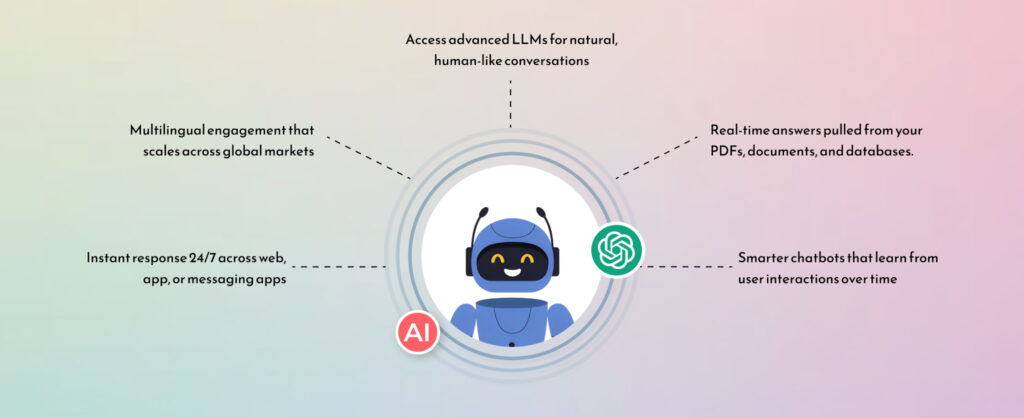
While OpenAI chatbots delivers top-tier performance, integrating them with Retrieval-Augmented Generation (RAG) takes it a step further — providing contextual, accurate, and real-time responses on behalf of your business.
Here’s why businesses should build a chatbot using OpenAI + RAG:
- Access advanced LLMs for natural, human-like conversations
- Real-time answers fetched from your documents and databases
- Multilingual engagement that scales across global markets
- Instant response 24/7 across web, app, or messaging apps
- Smarter chatbots that learn from user interactions over time
Whether you need a tech support bot, internal assistant, or AI sales rep — OpenAI + RAG gives your chatbot the depth, intelligence, and flexibility to handle real business demands.
Key Features of OpenAI-driven Chatbots
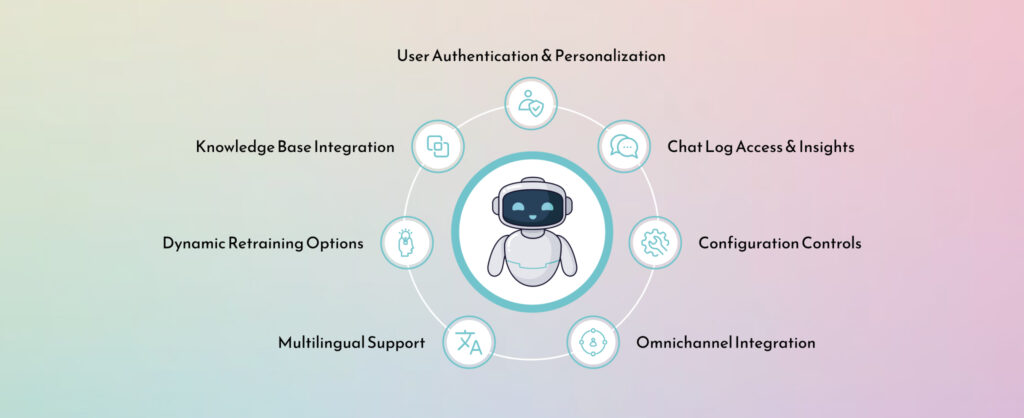
Developing an AI chatbot powered by OpenAI do more than just responding — they deliver intelligent, real-time support that evolves with your business needs. Below are six key features that turn a GPT-based bot into an enterprise asset.
1. Knowledge Base Integration
Pre-trained language models like GPT-4o are powerful but limited to their training cutoff. That’s why we connect your chatbot to a custom knowledge base using RAG.
This allows the bot to pull real-time data from your internal documents, product manuals, or any structured business data — delivering accurate, brand-aligned responses.
2. Chat Log Access & Insights
Every user interaction with the chatbot can be reviewed. These chat logs provide valuable insights into user behavior, frequent queries, and intent trends. These logs help:
- Optimize prompts and response templates
- Identify knowledge gaps
- Refine support workflows or handoff rules
3. Dynamic Retraining Options
OpenAI-integrated chatbots can be retrained with new, evolved data.
Whether it’s a product launch, policy update, or seasonal offer, you can update the knowledge base and refresh the bot’s context without rewriting logic or code.
This keeps your chatbot relevant and aligned with your evolving business.
4. Configuration Controls
As admins, you have full control over how the RAG chatbot thinks and behaves.
- Language Model: Choose the best language model from GPT-3.5, GPT-4, or GPT-4o based on speed, accuracy, or cost.
- Temperature: Regulates the AI language model’s behavior. Lower value means predictable responses, and higher value means creative outputs.
- Top-p: Determine the number of possible words to consider. A high “top_p” value means the model looks at more possible words, and a low “top p” limits word choices to the most likely ones.
5. Multilingual Support
OpenAI models support over 50+ languages, making it easy to serve global audiences. Chatbots built using OpenAI can detect a user’s input language and communicate accordingly. This supports international growth and reduces language-based friction in customer service.
No need to build separate bots for each region — use a single OpenAI RAG chatbot for multiple languages.
6. User Authentication & Personalization
OpenAI-integrated chatbots can be configured to behave differently for internal users and external site visitors. Integrating user login or role-based access enables chatbots to adapt its tone, permissions, and content visibility.
For instance, a registered user might get detailed account info while a general visitor sees FAQs only.
This adds a layer of contextual intelligence — critical for personalized services or managing sensitive business data.
7. Omnichannel Integration
OpenAI chatbots can be deployed across multiple channels — from websites and mobile apps to WhatsApp, Facebook Messenger, or Slack. This ensures a consistent experience across all touchpoints while using a centralized AI model and logic.
Beyond these core features, OpenAI-powered chatbots can be tailored with custom workflows, role-based access, and business-specific logic. Our AI chatbot development company can help build a custom bot, driving unique business goals.
Let’s build a custom chatbot with OpenAI integration
How OpenAI-Powered Chatbots Work with RAG
OpenAI-powered chatbots with RAG can generate dynamic, accurate, and contextual responses. They don’t depend on pre-trained knowledge. Instead, they search and retrieve relevant data in real time from internal documentation.
Here’s how RAG system works when used with AI chatbots built using OpenAI:
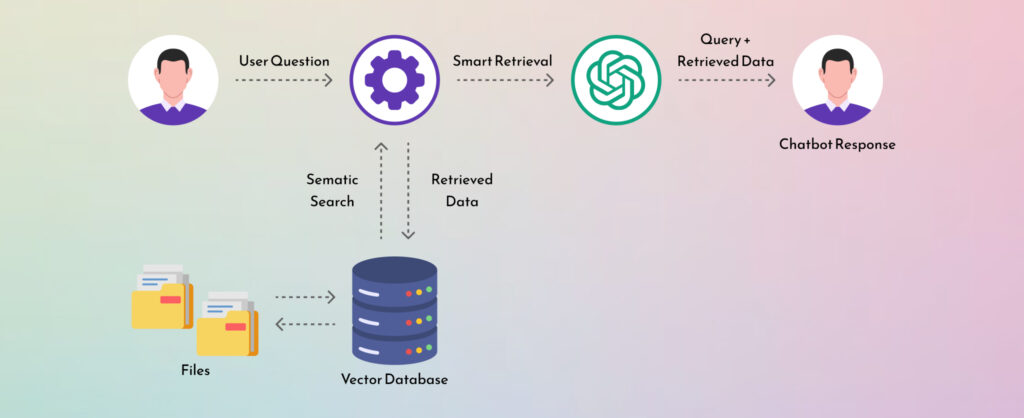
This approach is ideal for business applications where factual correctness and custom knowledge are critical.
How to Build a Chatbot Using OpenAI & RAG?
Building a chatbot with OpenAI API isn’t just about connecting code to a learning language model (LLM) — it’s about developing a responsive, intelligent business assistant.
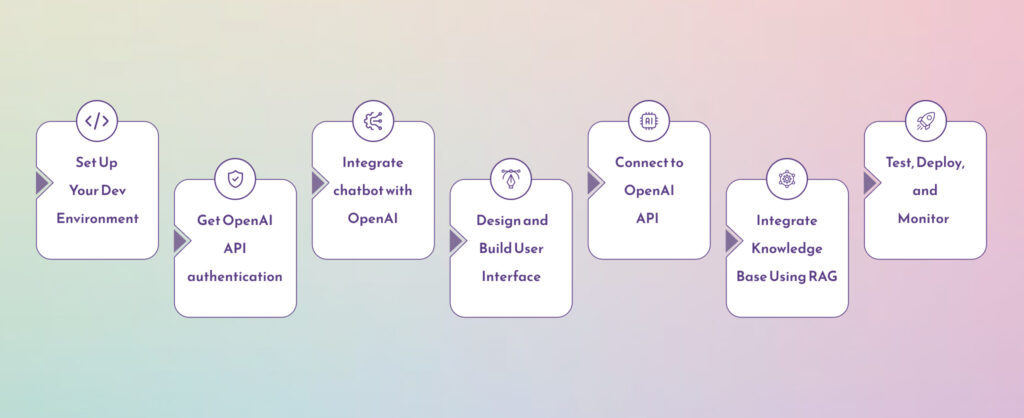
Whether you’re developing a support bot, sales assistant, or internal knowledge tool, these steps will help you get it right from day one.
Step 1: Set Up Your Dev Environment
Start by setting up a clean and functional development environment to ensure consistency across builds and faster debugging.
Implementation:
- Install Python 3.10+: Primary language for backend and API interaction.
- Create a Python virtual environment using venv.
- Install required libraries
- Use a modern code editor like VS Code for extensions, linting, and Git integration.
Step 2: Get OpenAI API Access & Authentication
Without OpenAI API access, your chatbot won’t be able to generate or return any meaningful response.
Implementation:
- Generate your secret API key —Create an account at platform.openai.com and generate your API key to communicate with OpenAI’s language models.
- Choose your Language Model
- gpt-3.5-turbo: Fast and budget-friendly.
- gpt-4 or gpt-4o: Better for complex, multi-turn conversations.
- Set usage limits in your OpenAI dashboard.
Step 3: Integrate Chatbot with OpenAI
Strong backend logic enables the chatbot to think and respond to user queries.
Implementation:
- Identify user roles (guest, customer, staff).
- Map user intents (information, task completion, navigation, or support).
- Create prompt templates using system messages to guide the tone of the chatbot:
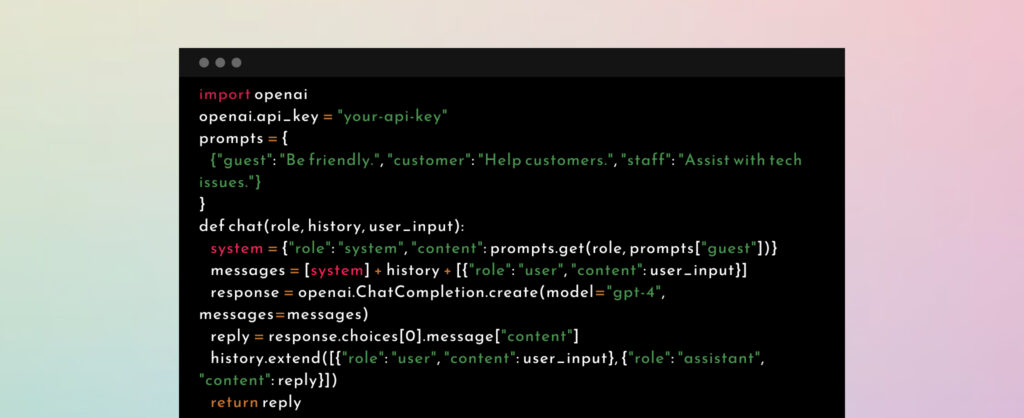
- For multi-turn chats, maintain conversation history in session memory or local storage.
Step 4: Design and Build User Interface
Now, build a user-friendly UI for users to interact with your chatbot — via a browser or app.
Implementation:
- Use Flask or FastAPI for backend routing.
- Design frontend
- Build core components
- Chat window with message history
- Input box for user queries
- Submit button
- Typing/loading animation (optional but improves UX)
- Add login and user roles to personalize responses or control access.
The bot’s intelligence is wasted if the user interface is confusing or slow. Your front end determines whether users engage—or leave.
Step 5: Connect Chatbot to OpenAI API
API communication is the brain of your chatbot. This is where the chatbot actually “thinks.” You send a user’s question, and the AI chatbot gives a human-like reply.
Implementation:
- Send the conversation data to OpenAI’s /chat/completions endpoint:

- Capture OpenAI’s response, format it, and send it back to the frontend for display.
- Add error-handling logic for rate limits, timeouts, or invalid prompts.
Step 6: Integrate Knowledge Base Using RAG
OpenAI’s language models don’t know anything specific about your business. This is where you integrate your unique knowledge base using RAG.
- Use tools like LangChain or LlamaIndex to upload your business documents — PDFs, product catalogs, support docs. To see how the latest release enhances these capabilities, check out our new blog on LangChain v1, where we break down its production‑ready features and business benefits.
- Store the content (in the form of embeddings) in a vector database like Pinecone, Weaviate, or Chroma.
- When a user asks a question:
- Search your vector DB for relevant context.
- Merge the retrieved context with the user’s query.
- Send it to OpenAI to generate an informed answer.
RAG transforms a “generic” GPT bot into a custom-trained virtual expert for your brand — giving fact-based, contextual answers.
Step 7: Test, Deploy, and Monitor Chatbot
Before going live, ensure your chatbot performs well in real-world scenarios.
- Test for Accuracy & Experience: Check if the bot provides relevant, accurate, and helpful answers.
- Test for edge cases: What happens if the bot doesn’t know the answer? Does it redirect, escalate, or loop?
- A/B test prompts: Try variations in system prompts for tone and brevity.
- Deployment: Use cloud platforms like Heroku, Vercel, or AWS Lambda for hosting.
- Add HTTPS, custom domains, and rate limiting to keep it secure.
- Monitor performance:
- Track usage, latency, token count, error rates, and user satisfaction via the OpenAI dashboard.
- Log user interactions for retraining.
A bot is never “done.” Continuous testing and refinement can turn a good chatbot into a great one.
Open AI Chatbot Integration Challenges — & How to Solve Them
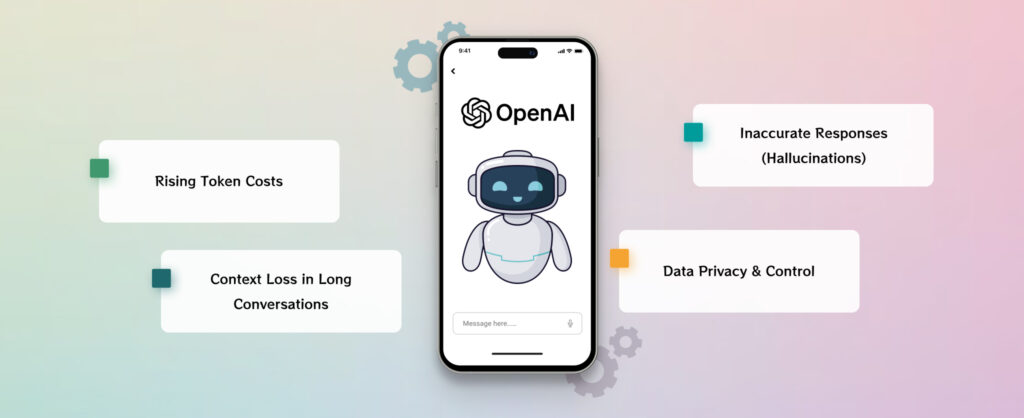
Even the most advanced AI chatbots can fall short without the right implementation. Here’s how we proactively address issues so your chatbot remains effective.
1. Inaccurate Responses or LLM Hallucinations
OpenAI models such as ChatGPT have made humungous progress, but generation of inaccurate response can potentially impact businesses. That’s called hallucinations in LLMs.
As per a Deloitte study, 77% of businesses are worried about AI hallucinations.
We solve this with RAG — grounding answers in your verified knowledge base for factual, brand-aligned responses.
2. Conversation Drift in Chatbots
Losing track of past messages disrupts smooth conversations and confuses users.
We address it by training LLM models with a variety of conversational scenarios. This memory mechanism helps chatbots retain context and deliver coherent, continuous dialogue across multiple queries.
3. Rising OpenAI API Token Costs
Each AI response consumes API tokens. With the rising adoption of OpenAI’s models in various applications, API usage has increased, driving up overall costs.
We fine-tune model settings like temperature and top-p, trim unnecessary tokens, and optimize prompts to keep usage lean and costs low.
4. Data Privacy & Control
OpenAI-powered bots often interact with sensitive user data.
We implement secure APIs, encryption, and role-based access, ensuring compliance with GDPR and enterprise-grade privacy standards.
Build a Chatbot Using OpenAI with Tech Stack
Building a powerful AI chatbot is not just about choosing a model — it’s about assembling the right tools around it. Here’s the essential technologies needed to create a chatbot with OpenAI API.
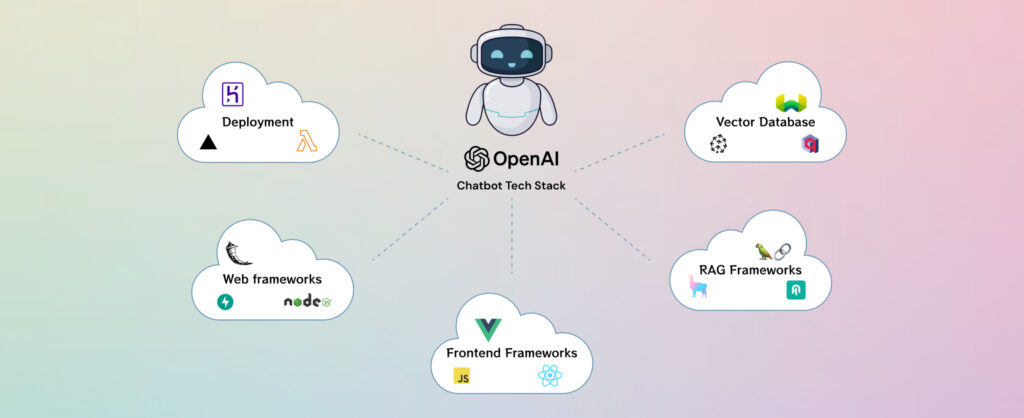
Real-World Applications of OpenAI-Powered Chatbots
OpenAI-powered chatbots are more than just support tools — they’re intelligent tools that drive automated, personalized, and real results across departments.

Here’s how businesses use AI chatbots today:
1. SEO Optimization Chatbots
Automate on-page SEO audits, generate metadata, and offer real-time content suggestions. These bots integrate with CMS platforms to help marketers improve rankings with calculated efforts.
2. Customer Support Bots
Respond instantly to FAQs, order status queries, and support issues across web, mobile, and messaging channels. With contextual memory and multilingual support, these bots provide instant, 24/7 assistance.
3. Internal Knowledge Assistants
They act as an on-demand help desk for employees — HR policies, IT procedures, SOPs, and more. Ideal for reducing internal ticket volume and improving team productivity.
4. Lead Generation Bots
Qualify website visitors, capture relevant contact information, and sync data with your CRM. These bots can even schedule demo calls or push leads into nurturing workflows.
5. Product Recommender Bots
Engage online shoppers with personalized product suggestions. Integrated with your inventory and customer data, these bots improve conversion rates and shopping cart value.
6. Reporting Bots
These bots pull real-time business data from dashboards or databases to generate custom reports on demand. Great for reporting KPIs, sales figures, or marketing campaign results.
Frequently Asked Questions
You can use OpenAI’s API to send user inputs and receive intelligent responses from models like GPT-4. It requires backend setup, prompt engineering, and a secure API connection.
Hire AI developers and get started
Yes, absolutely.
You can connect your chatbot to business data using a combination of:
1. Function Calling – for triggering API-based logic (e.g., database queries, workflow triggers, CRM actions)
2. RAG (Retrieval-Augmented Generation) – for retrieving relevant knowledge from internal documents, PDFs, FAQs, or knowledge bases
Together, these two methods allow your chatbot to understand questions, access the right data, and respond with accurate answers.
We calculate chatbot development cost after studying
1. Type of Chatbot: Rule-based chatbots are generally less expensive than AI chatbots with NLP capabilities.
2. Development approach: Use a chatbot platform or develop in-house.
3. Customization: The more specialized features you want, the higher the cost.
4. API Costs: OpenAI’s API incurs costs based on the number of tokens used.
Request a custom quote.
Absolutely. Your chatbot can be deployed on websites, mobile apps, WhatsApp, Messenger, and more — enabling omnichannel support from one AI-powered system.
Yes, but with proper implementation.
OpenAI’s API does not store customer data by default. Businesses can enhance security by encrypting inputs, anonymizing logs, and complying with standards like GDPR or HIPAA.
Also, test the OpenAI chatbot integration for compliance based on your industry.
Ready to Build a Chatbot Using OpenAI?
The future of customer support is with conversational AI. Whether you’re streamlining support, qualifying leads, or offering personalized product suggestions, building an AI chatbot using OpenAI can elevate your business operations, 24/7.
At The Brihaspati Infotech, we build intelligent, scalable AI chatbots using OpenAI and other large language models — all tailored to your business workflows. Whether a startup, small business, or growing company, we got you covered.
Let’s build and launch your AI chatbot. Get Started.
Stay Tuned for Latest Updates
Fill out the form to subscribe to our newsletter



